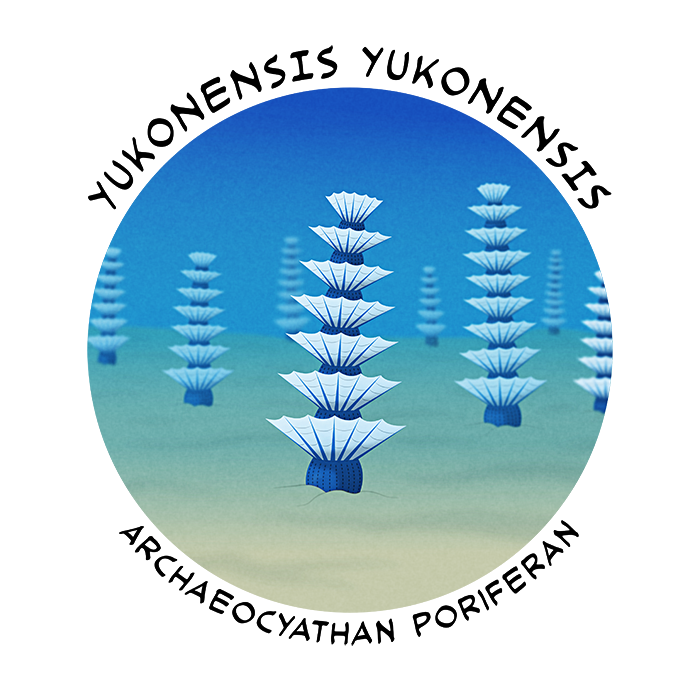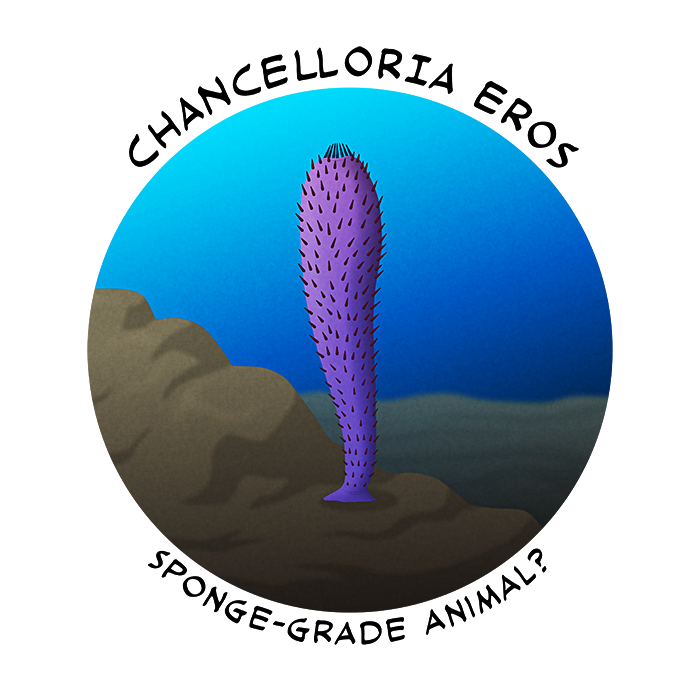Sponges were major reef builders during the Cambrian Explosion, and for the first half of the Cambrian Period the dominant reef-forming group were the bizarre archaeocyathans.
Although their reign was geologically short, lasting only about 15 million years, these tiny calcified sponges were incredibly numerous and diverse during that time, with hundreds of different species known from warm shallow marine waters all around the world. They came in a huge range of shapes, including cups, cones, funnels, towers, and irregular blobs, and were so weird that they weren’t even properly recognized as being sponges until the 1990s.

And Yukonensis yukonensis was one of the strangest-looking examples.
Found in Western and Northern Canada (and with a similar species also known from Alabama, USA), this archaeocyathan lived towards the end of the group’s heyday about 516-513 million years ago. It was only a few centimeters tall and less than 5mm wide (0.2″), and was made up of a stack of bulbous modular segments (up to at least 18 in some specimens), with whorls of spines with a sort of “webbing” between them giving it an overall appearance vaguely resembling a miniature horsetail or a pagoda.
It’s not clear what the purpose of this unusual arrangement was. The spines might have served a defensive function, or the webbing might have hosted symbiotic algae, or the spines and webbing might have been covered in cilia in life to help direct water flow for filter feeding.

Meanwhile, the evolutionary relationships of another odd group called the chancelloriids are still uncertain.
These animals had bag-like bodies with a single opening at the top, no evidence of defined internal organs, and their skin was bristling with mineralized spines that gave them a cactus-like appearance.
Much like sponges they were sessile filter-feeders that lived anchored to the sea floor, and they’re often considered to be “sponge-grade” animals that were either a weird branch of the sponge lineage or very early eumetazoans. (There’s also a competing theory that they were instead closely related to the mollusc-like halkieriids due to strong similarities in the structure of their spines, but there were still huge differences in the rest of their anatomy so this idea is currently looking rather unlikely.)
Chancelloria eros was a widespread species of chancelloriid found in mid-Cambrian deposits (~525-505 million years ago) around most of the world, including in the Americas, Europe, Asia, and Australia. It grew up to about 7cm tall (2.75″) and was shaped like a slim cone with the wider end at the top.
Both of these groups declined rapidly in the late Cambrian and were completely extinct by the end of the period, probably due to anoxic events and changes in climate and sea level eliminating much of their shallow-water coastal habitats.
